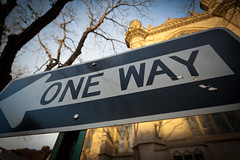 Now that the Civic Center Priority Development Area (PDA) has been rescinded, TAM is left with a bucket of PDA-designated cash and even fewer places put it. While Mayor Gary Phillips says downtown San Rafael’s PDA is a logical place to put it, none of the proposed projects in the area are at a stage where they need funding.
Now that the Civic Center Priority Development Area (PDA) has been rescinded, TAM is left with a bucket of PDA-designated cash and even fewer places put it. While Mayor Gary Phillips says downtown San Rafael’s PDA is a logical place to put it, none of the proposed projects in the area are at a stage where they need funding.
Part of the delay is due to San Rafael Public Works (DPW) Director Nader Mansourian’s reported insistence that any road alterations wait until after SMART starts service in 2016. As a result, anything that might disrupt a road’s or intersection’s capacity, or level of service (LOS) will have to wait until the needed capacity is known. That includes bike lanes, traffic lights, crosswalks, bus lanes, etc.
PDA funds must be dedicated to improving the transportation infrastructure within a PDA. While they can target projects outside of a PDA, the project must have a direct positive effect on transportation service within the PDA.
It’s up to the Council and staff to get a slate of needed improvements to the area, from the small to the large. Some possible proposals:
Study which projects in the Downtown Station Area Plan would and would not impact traffic. This is probably the most basic study that would need to be conducted, given that it will be three years before SMART runs and likely another year beyond that before traffic patterns start to emerge. This would give a slate of small projects that could be priced, studied, and built before the train.
Link traffic lights to the rail crossings, done in concert with SMART’s work on the rail crossings themselves. When trains start moving through downtown, they will need to coordinate with traffic flow By linking traffic lights to the crossings, San Rafael could prepare for the trains’ arrival today. The linkage will need to happen on Day One of train operations, and so cannot wait for traffic studies to even begin.
While they’re at it, link traffic lights to bus service. Buses currently crawl through downtown San Rafael, especially northbound trunk service like routes 71 and 101. By allowing traffic lights to sense approaching buses and turn green, a system called signal priority, San Rafael could improve speeds for all bus travelers and improve transit access to and through the downtown station area. While DPW will no doubt want a traffic study to find out precisely how the system should work after SMART, the study will only show how to tweak the system once SMART runs. Benefits could flow long before then.
Fix the Andersen Drive/SMART crossing. One of the principal barriers to getting SMART down to Larkspur is not the station or track but the at-grade intersection of SMART tracks and Andersen Drive. The angle of approach for the train is too shallow for state regulators and so will need to be fixed before the train can proceed south to the ferry terminal. Given that the problem was caused by San Rafael when they extended Andersen, it’s on San Rafael’s head to fix the $6 million problem.
Begin a comparison study of how people move through and shop in downtown. How do shoppers get to downtown? How many people move through downtown? This will give San Rafael planners a snapshot of how SMART and the Station Area Plan changes San Rafael and how to target improvements in the future.
The other pressing projects, even under-freeway parking garages (proposed by the Station Area Plan), will change traffic flow and so won’t pass Mansourian’s muster without a Council mandate. However, staff should draw up a decision tree and timetable for implementation of bike, parking, transit, and other traffic-impacting roadway improvements before SMART begins,
What else would be a good fit for TAM’s PDA-dedicated funds?
Note: I reached out to TAM to determine which of these projects are fundable with PDA money and which are not, but staff have been in a crunch time and haven't been able to answer. I'll post an update when they reply.
